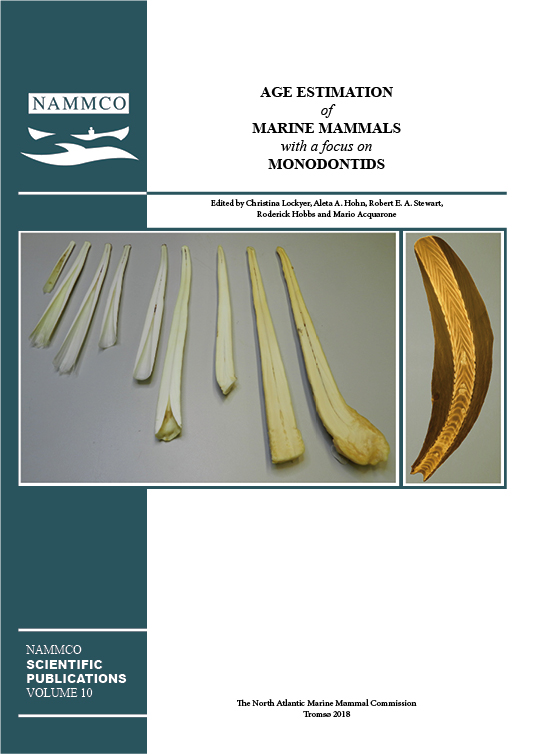A study on the improvement of age estimation in common minke whales using the method of gelatinized extraction of earplug
DOI:
https://doi.org/10.7557/3.2609Keywords:
minke whales, Balaenoptera physalus, aging, ageing, earplugs, gelatin extractionAbstract
We attempted to settle the potential problems of bias caused by too soft earplugs and poor formation of the growth layers in age readings of common minke whales. Thus, we examined the feasibility of a new technique of incorporating gelatin in order to collect earplugs for age assessment. Frozen sectioning and histology of the earplug core were also used as methods to improve age estimation. Earplugs were collected by filling the space in the external auditory meatus with gelatin, hardening the gelatin, earplug and its fragments, by spraying with cooling gas, and removing the earplug embedded in gelatin. In 174 trials with common minke whales in the Western North Pacific of coastal waters of Japan in 2007–2009, it was revealed that embedding earplugs with gelatin minimized breakage and protected the neonatal line (NL). This method was particularly effective in younger animals. As a result, the readability was improved. We also examined the histological sections, which were sliced using the Kawamoto specialized frozen sectioning technique, and stained them separately with toluidine blue, haematoxylin and eosin, Sudan III, Sudan VII, and alizarin red S to display a clearer core surface image of the growth layers. The histological sections stained with alizarin red S provided the clearest images, in which we could easily identify both dark and pale laminations. This suggested a close relationship with the seasonal changes in calcium intake from feeding. Earlier age estimation methods focused on fat content in the growth layers; however, we found potential for an improvement in the readability of unclear growth layers when focusing on calcium.





